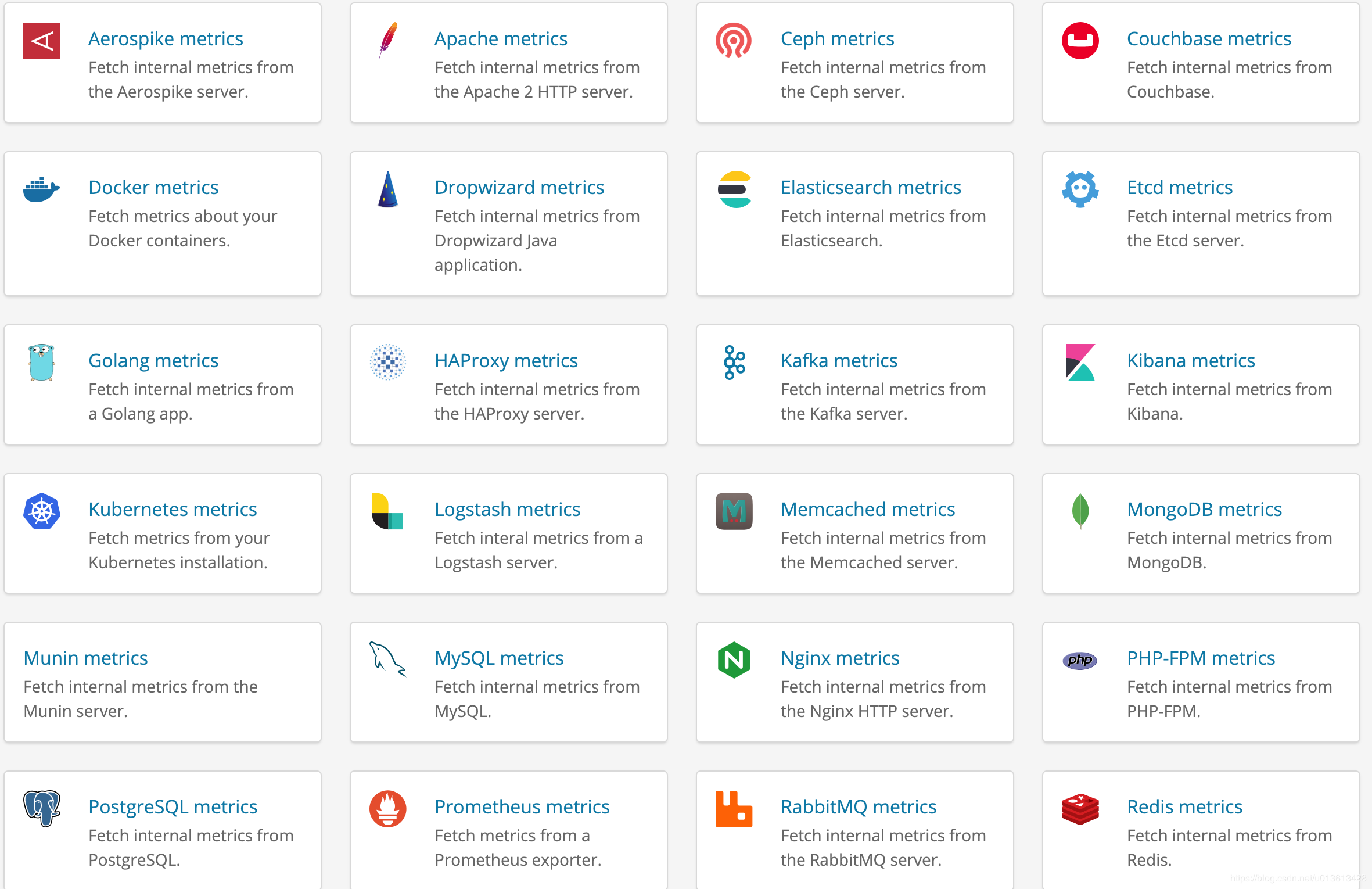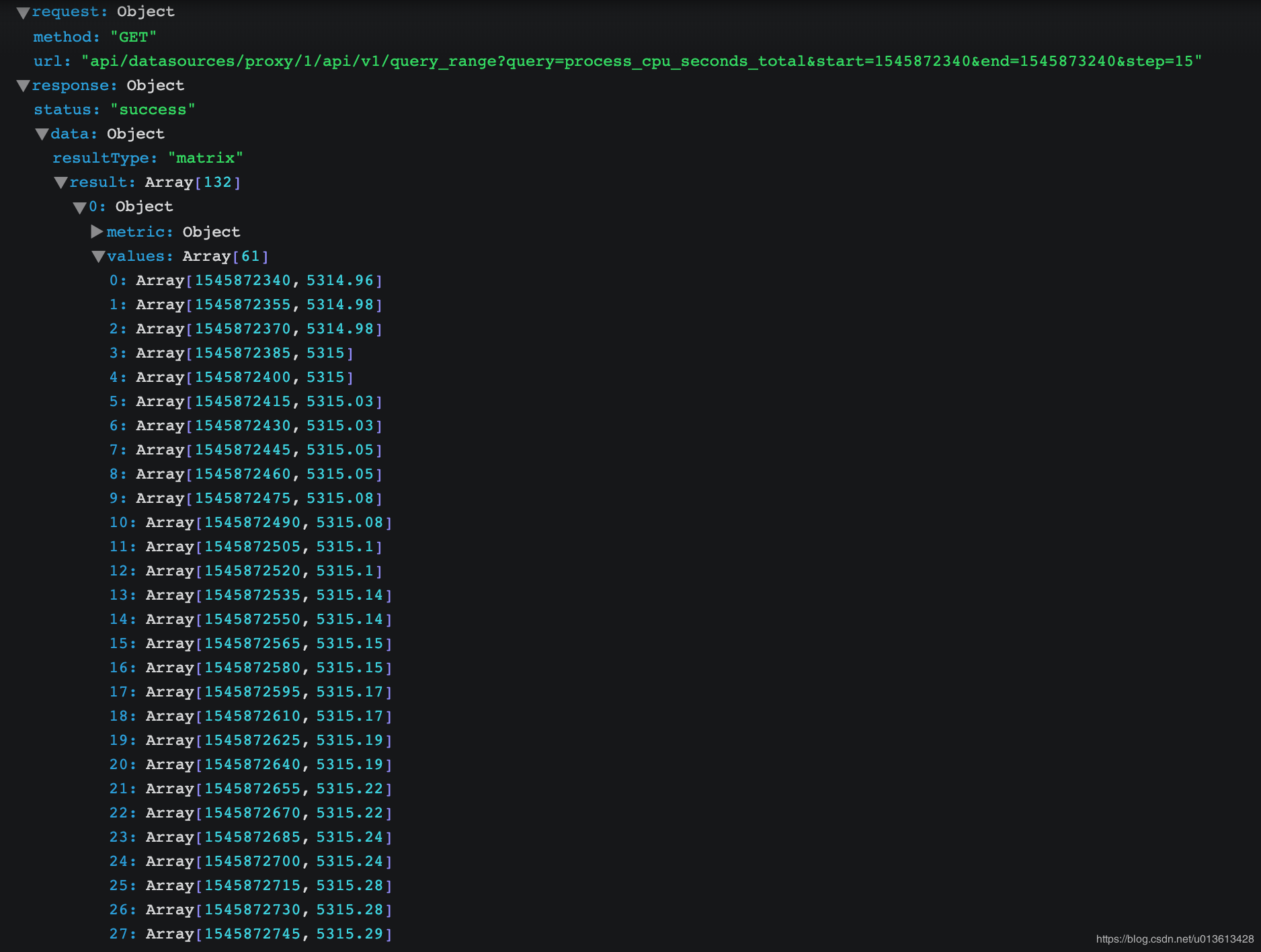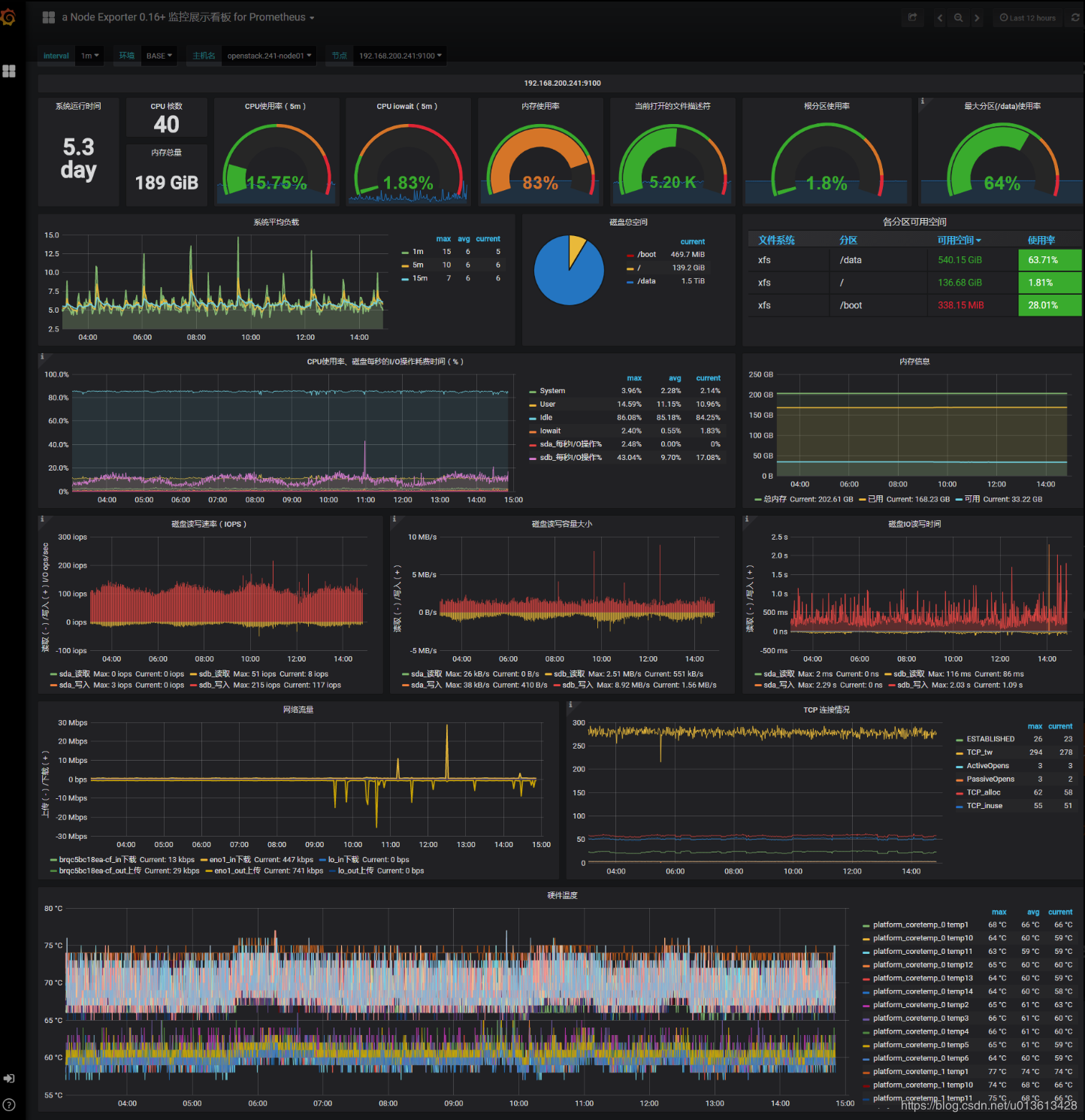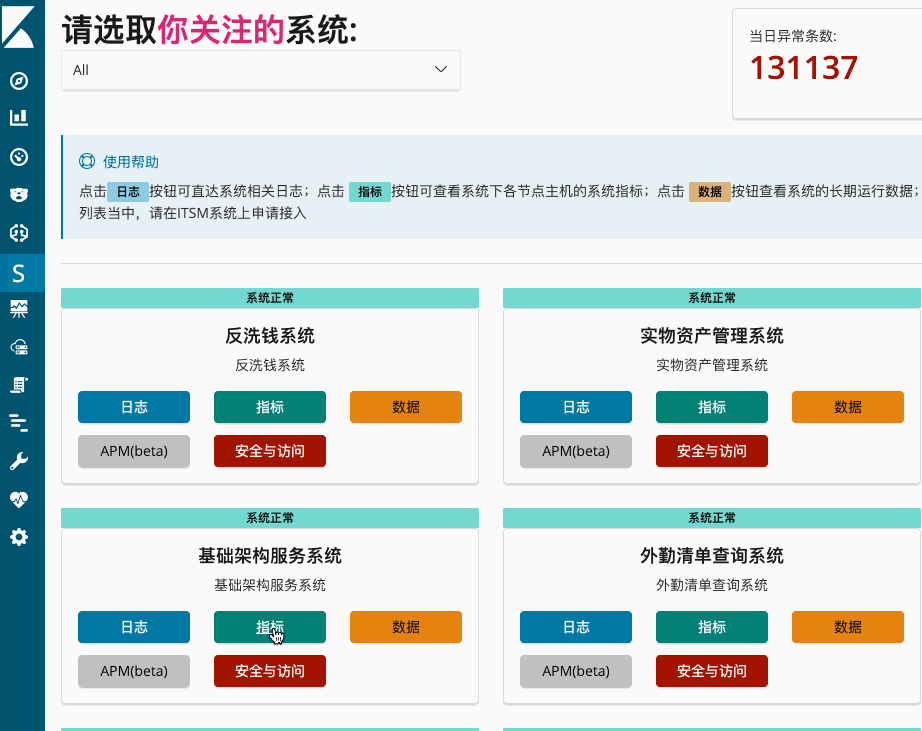社区日报 第501期 (2019-01-06)
http://t.cn/EGM5RCs
2.Spring Data Elasticsearch介绍。
http://t.cn/EAE698A
3.(自备梯子)区块链是互联网失败的提示。
http://t.cn/EbmQ42J
编辑:至尊宝
归档:https://elasticsearch.cn/article/6319
订阅:https://tinyletter.com/elastic-daily
http://t.cn/EGM5RCs
2.Spring Data Elasticsearch介绍。
http://t.cn/EAE698A
3.(自备梯子)区块链是互联网失败的提示。
http://t.cn/EbmQ42J
编辑:至尊宝
归档:https://elasticsearch.cn/article/6319
订阅:https://tinyletter.com/elastic-daily 收起阅读 »
使用 ES-Hadoop 将 Spark Streaming 流数据写入 ES
本文将详细介绍利用 ES-Hadoop 将 Spark 处理的数据写入到 ES 中。
一、开发环境
1、组件版本
- CDH 集群版本:6.0.1
- Spark 版本:2.2.0
- Kafka 版本:1.0.1
- ES 版本:6.5.1
2、Maven 依赖
<!-- scala -->
<dependency>
<groupId>org.scala-lang</groupId>
<artifactId>scala-library</artifactId>
<version>2.11.8</version>
</dependency>
<!-- spark 基础依赖 -->
<dependency>
<groupId>org.apache.spark</groupId>
<artifactId>spark-core_2.11</artifactId>
<version>2.2.0</version>
</dependency>
<!-- spark-streaming 相关依赖 -->
<dependency>
<groupId>org.apache.spark</groupId>
<artifactId>spark-streaming_2.11</artifactId>
<version>2.2.0</version>
</dependency>
<!-- spark-streaming-kafka 相关依赖 -->
<dependency>
<groupId>org.apache.spark</groupId>
<artifactId>spark-streaming-kafka-0-10_2.11</artifactId>
<version>2.2.0</version>
</dependency>
<!-- zookeeper 相关依赖 -->
<dependency>
<groupId>org.apache.zookeeper</groupId>
<artifactId>zookeeper</artifactId>
<version>3.4.5-cdh6.0.1</version>
</dependency>
<!-- Spark-ES 相关依赖 -->
<dependency>
<groupId>org.elasticsearch</groupId>
<artifactId>elasticsearch-spark-20_2.11</artifactId>
<version>6.5.4</version>
</dependency>
<!-- Spark-ES 依赖的 HTTP 传输组件 -->
<dependency>
<groupId>commons-httpclient</groupId>
<artifactId>commons-httpclient</artifactId>
<version>3.1</version>
</dependency>3、注意事项
如果使用 CDH 版本的 Spark,则在调试及实际部署运行的时候会出现下面的错误:
java.lang.ClassNotFoundException: org.apache.commons.httpclient.protocol.Protocol很显然是缺少 httpclient 相关依赖造成的,对比开源版本与 CDH 版本的 Spark,发现开源版本多出了 commons-httpclient-3.1.jar,因此上述 Maven 的 pom 文件添加上对其依赖即可。
二、ES-Hadoop
1、简介
ES-Hadoop 实现了 Hadoop 生态(Hive、Spark、Pig、Storm 等)与 ElasticSearch 之间的数据交互,借助该组件可以将 Hadoop 生态的数据写入到 ES 中,然后借助 ES 对数据快速进行搜索、过滤、聚合等分析,进一步可以通过 Kibana 来实现数据的可视化。
同时,也可以借助 ES 作为数据存储层(类似数仓的 Stage 层或者 ODS 层),然后借助 Hadoop 生态的数据处理工具(Hive、MR、Spark 等)将处理后的数据写入到 HDFS 中。
使用 ES 做为原始数据的存储层,可以很好的进行数据去重、数据质量分析,还可以提供一些即时的数据服务,例如趋势展示、汇总分析等。
2、组成
ES-Hadoop 是一个整合性质的组件,它封装了 Hadoop 生态的多种组件与 ES 交互的 API,如果你只需要部分功能,可以使用细分的组件:
- elasticsearch-hadoop-mr
- elasticsearch-hadoop-hive
- elasticsearch-hadoop-pig
- elasticsearch-spark-20_2.10
- elasticsearch-hadoop-cascading
- elasticsearch-storm
三、elasticsearch-spark
1、配置
es-hadoop 核心是通过 es 提供的 restful 接口来进行数据交互,下面是几个重要配置项,更多配置信息请参阅官方说明:
es.nodes:需要连接的 es 节点(不需要配置全部节点,默认会自动发现其他可用节点);es.port:节点 http 通讯端口;es.nodes.discovery:默认为 true,表示自动发现集群可用节点;es.nodes.wan.only:默认为 false,设置为 true 之后,会关闭节点的自动 discovery,只使用es.nodes声明的节点进行数据读写操作;如果你需要通过域名进行数据访问,则设置该选项为 true,否则请务必设置为 false;es.index.auto.create:是否自动创建不存在的索引,默认为 true;es.net.http.auth.user:Basic 认证的用户名;es.net.http.auth.pass:Basic 认证的密码。
val conf = new SparkConf().setIfMissing("spark.app.name","rt-data-loader").setIfMissing("spark.master", "local[5]")
conf.set(ConfigurationOptions.ES_NODES, esNodes)
conf.set(ConfigurationOptions.ES_PORT, esPort)
conf.set(ConfigurationOptions.ES_NODES_WAN_ONLY, "true")
conf.set(ConfigurationOptions.ES_INDEX_AUTO_CREATE, "true")
conf.set(ConfigurationOptions.ES_NODES_DISCOVERY, "false")
conf.set(ConfigurationOptions.ES_NET_HTTP_AUTH_USER, esUser)
conf.set(ConfigurationOptions.ES_NET_HTTP_AUTH_PASS, esPwd)
conf.set("es.write.rest.error.handlers", "ignoreConflict")
conf.set("es.write.rest.error.handler.ignoreConflict", "com.jointsky.bigdata.handler.IgnoreConflictsHandler")特别需要注意的配置项为 es.nodes.wan.only,由于在云服务器环境中,配置文件使用的一般为内网地址,而本地调试的时候一般使用外网地址,这样将 es.nodes 配置为外网地址后,最后会出现节点找不到的问题(由于会使用节点配置的内网地址去进行连接):
org.elasticsearch.hadoop.EsHadoopIllegalArgumentException: No data nodes with HTTP-enabled available;
node discovery is disabled and none of nodes specified fit the criterion [xxx.xx.x.xx:9200]此时将 es.nodes.wan.only 设置为 true 即可。推荐开发测试时使用域名,集群部署的时候将该选项置为 false。
2、屏蔽写入冲突
如果数据存在重复,写入 ES 时往往会出现数据写入冲突的错误,此时有两种解决方法。
方法一:设置 es.write.operation 为 upsert,这样达到的效果为如果存在则更新,不存在则进行插入,该配置项默认值为 index。
方法二:自定义冲突处理类,类似上述配置中设置了自定义的 error.handlers,通过自定义类来处理相关错误,例如忽略冲突等:
public class IgnoreConflictsHandler extends BulkWriteErrorHandler {
public HandlerResult onError(BulkWriteFailure entry, DelayableErrorCollector<byte[]> collector) throws Exception {
if (entry.getResponseCode() == 409) {
StaticLog.warn("Encountered conflict response. Ignoring old data.");
return HandlerResult.HANDLED;
}
return collector.pass("Not a conflict response code.");
}
}方法二可以屏蔽写入版本比预期的小之类的版本冲突问题。
3、RDD 写入 ES
EsSpark 提供了两种主要方法来实现数据写入:
saveToEs:RDD 内容为Seq[Map],即一个 Map 对象集合,每个 Map 对应一个文档;saveJsonToEs:RDD 内容为Seq[String],即一个 String 集合,每个 String 是一个 JSON 字符串,代表一条记录(对应 ES 的 _source)。
数据写入可以指定很多配置信息,例如:
es.resource:设置写入的索引和类型,索引和类型名均支持动态变量;es.mapping.id:设置文档 _id 对应的字段名;es.mapping.exclude:设置写入时忽略的字段,支持通配符。
val itemRdd = rdd.flatMap(line => {
val topic = line.topic()
println("正在处理:" + topic + " - " + line.partition() + " : " + line.offset())
val jsonArray = JSON.parseArray(line.value()).toJavaList(classOf[JSONObject]).asScala
val resultMap = jsonArray.map(jsonObj =>{
var tmpId = "xxx"
var tmpIndex = "xxxxxx"
jsonObj.put("myTmpId", tmpId)
jsonObj.put("myTmpIndex", tmpIndex)
jsonObj.getInnerMap
})
resultMap
})
val mapConf = Map(
("es.resource" , "{myTmpIndex}/doc"),
("es.write.operation" , "upsert"),
("es.mapping.id" , "myTmpId"),
("es.mapping.exclude" , "myTmp*")
)
EsSpark.saveToEs(itemRdd, mapConf)
es.mapping.exclude只支持 RDD 为 Map 集合(saveToEs),当为 Json 字符串集合时(saveJsonToEs)会提示不支持的错误信息;这个配置项非常有用,例如 myTmpId 作为文档 id,因此没有必要重复存储到 _source 里面了,可以配置到这个配置项,将其从 _source 中排除。
Any Code,Code Any!
扫码关注『AnyCode』,编程路上,一起前行。
本文将详细介绍利用 ES-Hadoop 将 Spark 处理的数据写入到 ES 中。
一、开发环境
1、组件版本
- CDH 集群版本:6.0.1
- Spark 版本:2.2.0
- Kafka 版本:1.0.1
- ES 版本:6.5.1
2、Maven 依赖
<!-- scala -->
<dependency>
<groupId>org.scala-lang</groupId>
<artifactId>scala-library</artifactId>
<version>2.11.8</version>
</dependency>
<!-- spark 基础依赖 -->
<dependency>
<groupId>org.apache.spark</groupId>
<artifactId>spark-core_2.11</artifactId>
<version>2.2.0</version>
</dependency>
<!-- spark-streaming 相关依赖 -->
<dependency>
<groupId>org.apache.spark</groupId>
<artifactId>spark-streaming_2.11</artifactId>
<version>2.2.0</version>
</dependency>
<!-- spark-streaming-kafka 相关依赖 -->
<dependency>
<groupId>org.apache.spark</groupId>
<artifactId>spark-streaming-kafka-0-10_2.11</artifactId>
<version>2.2.0</version>
</dependency>
<!-- zookeeper 相关依赖 -->
<dependency>
<groupId>org.apache.zookeeper</groupId>
<artifactId>zookeeper</artifactId>
<version>3.4.5-cdh6.0.1</version>
</dependency>
<!-- Spark-ES 相关依赖 -->
<dependency>
<groupId>org.elasticsearch</groupId>
<artifactId>elasticsearch-spark-20_2.11</artifactId>
<version>6.5.4</version>
</dependency>
<!-- Spark-ES 依赖的 HTTP 传输组件 -->
<dependency>
<groupId>commons-httpclient</groupId>
<artifactId>commons-httpclient</artifactId>
<version>3.1</version>
</dependency>3、注意事项
如果使用 CDH 版本的 Spark,则在调试及实际部署运行的时候会出现下面的错误:
java.lang.ClassNotFoundException: org.apache.commons.httpclient.protocol.Protocol很显然是缺少 httpclient 相关依赖造成的,对比开源版本与 CDH 版本的 Spark,发现开源版本多出了 commons-httpclient-3.1.jar,因此上述 Maven 的 pom 文件添加上对其依赖即可。
二、ES-Hadoop
1、简介
ES-Hadoop 实现了 Hadoop 生态(Hive、Spark、Pig、Storm 等)与 ElasticSearch 之间的数据交互,借助该组件可以将 Hadoop 生态的数据写入到 ES 中,然后借助 ES 对数据快速进行搜索、过滤、聚合等分析,进一步可以通过 Kibana 来实现数据的可视化。
同时,也可以借助 ES 作为数据存储层(类似数仓的 Stage 层或者 ODS 层),然后借助 Hadoop 生态的数据处理工具(Hive、MR、Spark 等)将处理后的数据写入到 HDFS 中。
使用 ES 做为原始数据的存储层,可以很好的进行数据去重、数据质量分析,还可以提供一些即时的数据服务,例如趋势展示、汇总分析等。
2、组成
ES-Hadoop 是一个整合性质的组件,它封装了 Hadoop 生态的多种组件与 ES 交互的 API,如果你只需要部分功能,可以使用细分的组件:
- elasticsearch-hadoop-mr
- elasticsearch-hadoop-hive
- elasticsearch-hadoop-pig
- elasticsearch-spark-20_2.10
- elasticsearch-hadoop-cascading
- elasticsearch-storm
三、elasticsearch-spark
1、配置
es-hadoop 核心是通过 es 提供的 restful 接口来进行数据交互,下面是几个重要配置项,更多配置信息请参阅官方说明:
es.nodes:需要连接的 es 节点(不需要配置全部节点,默认会自动发现其他可用节点);es.port:节点 http 通讯端口;es.nodes.discovery:默认为 true,表示自动发现集群可用节点;es.nodes.wan.only:默认为 false,设置为 true 之后,会关闭节点的自动 discovery,只使用es.nodes声明的节点进行数据读写操作;如果你需要通过域名进行数据访问,则设置该选项为 true,否则请务必设置为 false;es.index.auto.create:是否自动创建不存在的索引,默认为 true;es.net.http.auth.user:Basic 认证的用户名;es.net.http.auth.pass:Basic 认证的密码。
val conf = new SparkConf().setIfMissing("spark.app.name","rt-data-loader").setIfMissing("spark.master", "local[5]")
conf.set(ConfigurationOptions.ES_NODES, esNodes)
conf.set(ConfigurationOptions.ES_PORT, esPort)
conf.set(ConfigurationOptions.ES_NODES_WAN_ONLY, "true")
conf.set(ConfigurationOptions.ES_INDEX_AUTO_CREATE, "true")
conf.set(ConfigurationOptions.ES_NODES_DISCOVERY, "false")
conf.set(ConfigurationOptions.ES_NET_HTTP_AUTH_USER, esUser)
conf.set(ConfigurationOptions.ES_NET_HTTP_AUTH_PASS, esPwd)
conf.set("es.write.rest.error.handlers", "ignoreConflict")
conf.set("es.write.rest.error.handler.ignoreConflict", "com.jointsky.bigdata.handler.IgnoreConflictsHandler")特别需要注意的配置项为 es.nodes.wan.only,由于在云服务器环境中,配置文件使用的一般为内网地址,而本地调试的时候一般使用外网地址,这样将 es.nodes 配置为外网地址后,最后会出现节点找不到的问题(由于会使用节点配置的内网地址去进行连接):
org.elasticsearch.hadoop.EsHadoopIllegalArgumentException: No data nodes with HTTP-enabled available;
node discovery is disabled and none of nodes specified fit the criterion [xxx.xx.x.xx:9200]此时将 es.nodes.wan.only 设置为 true 即可。推荐开发测试时使用域名,集群部署的时候将该选项置为 false。
2、屏蔽写入冲突
如果数据存在重复,写入 ES 时往往会出现数据写入冲突的错误,此时有两种解决方法。
方法一:设置 es.write.operation 为 upsert,这样达到的效果为如果存在则更新,不存在则进行插入,该配置项默认值为 index。
方法二:自定义冲突处理类,类似上述配置中设置了自定义的 error.handlers,通过自定义类来处理相关错误,例如忽略冲突等:
public class IgnoreConflictsHandler extends BulkWriteErrorHandler {
public HandlerResult onError(BulkWriteFailure entry, DelayableErrorCollector<byte[]> collector) throws Exception {
if (entry.getResponseCode() == 409) {
StaticLog.warn("Encountered conflict response. Ignoring old data.");
return HandlerResult.HANDLED;
}
return collector.pass("Not a conflict response code.");
}
}方法二可以屏蔽写入版本比预期的小之类的版本冲突问题。
3、RDD 写入 ES
EsSpark 提供了两种主要方法来实现数据写入:
saveToEs:RDD 内容为Seq[Map],即一个 Map 对象集合,每个 Map 对应一个文档;saveJsonToEs:RDD 内容为Seq[String],即一个 String 集合,每个 String 是一个 JSON 字符串,代表一条记录(对应 ES 的 _source)。
数据写入可以指定很多配置信息,例如:
es.resource:设置写入的索引和类型,索引和类型名均支持动态变量;es.mapping.id:设置文档 _id 对应的字段名;es.mapping.exclude:设置写入时忽略的字段,支持通配符。
val itemRdd = rdd.flatMap(line => {
val topic = line.topic()
println("正在处理:" + topic + " - " + line.partition() + " : " + line.offset())
val jsonArray = JSON.parseArray(line.value()).toJavaList(classOf[JSONObject]).asScala
val resultMap = jsonArray.map(jsonObj =>{
var tmpId = "xxx"
var tmpIndex = "xxxxxx"
jsonObj.put("myTmpId", tmpId)
jsonObj.put("myTmpIndex", tmpIndex)
jsonObj.getInnerMap
})
resultMap
})
val mapConf = Map(
("es.resource" , "{myTmpIndex}/doc"),
("es.write.operation" , "upsert"),
("es.mapping.id" , "myTmpId"),
("es.mapping.exclude" , "myTmp*")
)
EsSpark.saveToEs(itemRdd, mapConf)
es.mapping.exclude只支持 RDD 为 Map 集合(saveToEs),当为 Json 字符串集合时(saveJsonToEs)会提示不支持的错误信息;这个配置项非常有用,例如 myTmpId 作为文档 id,因此没有必要重复存储到 _source 里面了,可以配置到这个配置项,将其从 _source 中排除。
Any Code,Code Any!
扫码关注『AnyCode』,编程路上,一起前行。
社区日报 第500期 (2019-01-05)
-
科普篇:ELK(ElasticSearch, Logstash, Kibana)搭建日志分析平台。 http://t.cn/EGMUSm2
-
怎么用vue和es构建图书搜索应用(需翻墙)。 http://t.cn/EGMUO9j
- 一周热点:罗振宇2018“时间的朋友”跨年演讲未删减全文。 http://t.cn/EGMU8Se
-
科普篇:ELK(ElasticSearch, Logstash, Kibana)搭建日志分析平台。 http://t.cn/EGMUSm2
-
怎么用vue和es构建图书搜索应用(需翻墙)。 http://t.cn/EGMUO9j
- 一周热点:罗振宇2018“时间的朋友”跨年演讲未删减全文。 http://t.cn/EGMU8Se
社区日报 第499期(2019-1-4)
http://t.cn/EG7Knck
2、使用ee-outliers和Elasticsearch检测可疑子进程
http://t.cn/E4Q1lLF
3、curator工具使用解读
http://t.cn/EG79Pug
编辑:铭毅天下
归档:https://elasticsearch.cn/article/6316
订阅:https://tinyletter.com/elastic-daily
http://t.cn/EG7Knck
2、使用ee-outliers和Elasticsearch检测可疑子进程
http://t.cn/E4Q1lLF
3、curator工具使用解读
http://t.cn/EG79Pug
编辑:铭毅天下
归档:https://elasticsearch.cn/article/6316
订阅:https://tinyletter.com/elastic-daily 收起阅读 »
社区日报 第498期 (2019-01-03)
http://t.cn/EbF0saD
2.kubernetes 日志架构
http://t.cn/EbFOLtD
3.ee-outliers:用于检测Elasticsearch事件中的异常值的开源框架
http://t.cn/EbxWUsD
编辑:金桥
归档:https://elasticsearch.cn/article/6315
订阅:https://tinyletter.com/elastic-daily
http://t.cn/EbF0saD
2.kubernetes 日志架构
http://t.cn/EbFOLtD
3.ee-outliers:用于检测Elasticsearch事件中的异常值的开源框架
http://t.cn/EbxWUsD
编辑:金桥
归档:https://elasticsearch.cn/article/6315
订阅:https://tinyletter.com/elastic-daily 收起阅读 »
社区日报 第497期 (2019-01-02)
http://t.cn/E4439oI
2. 引入ELK前需要知道的“坑”(上)
http://t.cn/EbggZrv
3.公司 Elasticsearch 升级带来的坑怎么填
http://t.cn/EbguZUx
编辑:江水
归档:https://elasticsearch.cn/article/6314
订阅:https://tinyletter.com/elastic-daily
http://t.cn/E4439oI
2. 引入ELK前需要知道的“坑”(上)
http://t.cn/EbggZrv
3.公司 Elasticsearch 升级带来的坑怎么填
http://t.cn/EbguZUx
编辑:江水
归档:https://elasticsearch.cn/article/6314
订阅:https://tinyletter.com/elastic-daily 收起阅读 »
社区日报 第496期 (2019-01-01)
http://t.cn/EbuMzr1
2、从分布式系统设计看Elasticsearch集群及数据结构。
http://t.cn/EbuIFh6
3、Elasticsearch、Graphite与InfluxDB系统属性比较。
http://t.cn/Ebuh1js
btw:2019年的第一天,Elastic中文社区祝大家元旦快乐,把时间花在美好的事物上,常来常惦记Elasticsearch中文社区。
编辑:叮咚光军
归档:https://elasticsearch.cn/article/6313
订阅:https://tinyletter.com/elastic-daily
http://t.cn/EbuMzr1
2、从分布式系统设计看Elasticsearch集群及数据结构。
http://t.cn/EbuIFh6
3、Elasticsearch、Graphite与InfluxDB系统属性比较。
http://t.cn/Ebuh1js
btw:2019年的第一天,Elastic中文社区祝大家元旦快乐,把时间花在美好的事物上,常来常惦记Elasticsearch中文社区。
编辑:叮咚光军
归档:https://elasticsearch.cn/article/6313
订阅:https://tinyletter.com/elastic-daily 收起阅读 »
社区日报 第494期 (2018-12-30)
http://t.cn/Eb9Ahhr
2.使用Flink和Kafka构建数据管道。
http://t.cn/Eb92onY
3.(自备梯子)Jupyter Notebook 扩展。
http://t.cn/EyD8Ao5
编辑:至尊宝
归档:https://elasticsearch.cn/article/6312
订阅:https://tinyletter.com/elastic-daily
http://t.cn/Eb9Ahhr
2.使用Flink和Kafka构建数据管道。
http://t.cn/Eb92onY
3.(自备梯子)Jupyter Notebook 扩展。
http://t.cn/EyD8Ao5
编辑:至尊宝
归档:https://elasticsearch.cn/article/6312
订阅:https://tinyletter.com/elastic-daily 收起阅读 »
社区日报 第493期 (2018-12-29)
-
400+节点的Elasticsearch集群运维经验。 http://t.cn/EbJXsTM
-
Elasticsearch index、create和update的源码分析。 http://t.cn/EbJSwbP
- 全文搜索引擎选Elasticsearch还是Solr?。 http://t.cn/EbJSRp9
-
400+节点的Elasticsearch集群运维经验。 http://t.cn/EbJXsTM
-
Elasticsearch index、create和update的源码分析。 http://t.cn/EbJSwbP
- 全文搜索引擎选Elasticsearch还是Solr?。 http://t.cn/EbJSRp9
社区日报 第492期(2018-12-28)
http://t.cn/EUHPscA
2、elasticsearch 核心的http api
http://t.cn/E4lC5g4
3、使用Search Guard加固Elasticsearch:认证与授权
http://t.cn/EbLSOBl
编辑:铭毅天下
归档:https://elasticsearch.cn/article/6310
订阅:https://tinyletter.com/elastic-daily
http://t.cn/EUHPscA
2、elasticsearch 核心的http api
http://t.cn/E4lC5g4
3、使用Search Guard加固Elasticsearch:认证与授权
http://t.cn/EbLSOBl
编辑:铭毅天下
归档:https://elasticsearch.cn/article/6310
订阅:https://tinyletter.com/elastic-daily
收起阅读 »
社区日报 第491期 (2018-12-27)
http://t.cn/EyX3TRu
2.彻底解决es的unassigned shards症状
http://t.cn/EbP4B07
3.链家全链路跟踪平台设计实践
http://t.cn/EyI5qWI
编辑:金桥
归档:https://elasticsearch.cn/article/6309
订阅:https://tinyletter.com/elastic-daily
http://t.cn/EyX3TRu
2.彻底解决es的unassigned shards症状
http://t.cn/EbP4B07
3.链家全链路跟踪平台设计实践
http://t.cn/EyI5qWI
编辑:金桥
归档:https://elasticsearch.cn/article/6309
订阅:https://tinyletter.com/elastic-daily 收起阅读 »
社区日报 第494期 (2018-12-31)
http://t.cn/EApHfmI
2.es存储详解。
http://t.cn/Eb8LFXD
3.es集群部署的一些配置项。
http://t.cn/Eb8yNc1
编辑:wt
归档:https://elasticsearch.cn/article/6308
订阅:https://tinyletter.com/elastic-daily
http://t.cn/EApHfmI
2.es存储详解。
http://t.cn/Eb8LFXD
3.es集群部署的一些配置项。
http://t.cn/Eb8yNc1
编辑:wt
归档:https://elasticsearch.cn/article/6308
订阅:https://tinyletter.com/elastic-daily 收起阅读 »
为何要通过Kibana展示promethues的数据以及如何去做
Elastic stack不停的迭代中狂奔。在最新的V6.5版本发布后,我们可以发现,其路线图已经越来越倾向于成为一个全栈的,全链路的,从下至上,从底层硬件资源数据一直到上层用户数据,从资源监控,到性能监控,直至安全审计的智能化运维系统了。这其中解决的一个痛点是:企业中存在各种各样的业务系统,每个系统又存在不同的数据源和存储数据的数据库;同时在运维管理层面上,又各种不同的监控系统(资源监控,性能监控,安全和审计)以及上层的可视化系统。这样,导致运维人员需要面对繁多的系统、入口和数据维度,在处理问题时,需要登录不同的平台,并且无法对数据进行有效的关联分析,因此,是迫切需要一个强大的平台,能够快速便捷的处理这些问题的。 我们可以看到,从不停发布的beats,以及beats里面不停添加的modules:
以及支持的各种数据指标模版:
elastic stack在加速将越来越多的数据需要汇聚到一起,并且提供一个统一的接口进入,这就是Kibana。这里,我不打算深入的比较Kibana和Grafana,简单说一句,就是grafana的主要场景只是dashboard,并不适合将其用作一个将所有数据集中到一起,需要做各种维度的查询,分析,安全检查等功能的portal。所以,这里我们讨论的是Kibana上如何展示其他数据源的数据。
为什么是prometheus而不是beats
在这个人人上云的时代,无论是open stack还是K8S,最流行的资源监控软件我看到的是prometheus,特别是以node_exporter为基础的一系列metric采集工具,为prometheus提供了各种维度的监控数据。而对应的,elastic stack也提供了类似filebeat, metricbeat, packatbeat等一系列工具和对应的数据template。
我没有深入使用过prometheus,但作为一个beats的资深用户,我还是感觉到beats还存在诸多的问题,特别是filebeat上幽灵般存在的内存占用过多的问题,导致大规模在所有的节点上安装beats成为一种风险。并且,最主要的一个点,我觉得是beats采集的数据,是依赖于整个elastic stack进行展示的,而作为云的运维人员,其关心的重点是每个虚拟机,容器的资源监控情况,metric和alart是其重心,而非query,search,security等功能。并且安装一个prometheus,比安装整个elastic stack简便得多,消耗的资源也小的多。所以,普遍的,从主机运维人员的角度,肯定首选安装prometheus的exporter来作资源的监控,而非安装beats。
为什么Kibana上需要集成prometheus的数据
正因为之前所讲的,我们试图使用elastic stack作为一个多维度的统一的数据入口和展示工具,要求我们必须能在Kibana看到硬件资源监控级别的指标,而elastic stack提供的beats等工具,却并不为云运维人员所待见(因为他们更喜欢prometheus,而非elastic stack,原因见以上)。因此,如果我们需要将elastic stack打造为一套全栈的智能运维系统,大多数情况下,prometheus成为必须跨越的一个槛。
将prometheus上的数据转移到elasticsearch
这是我想到的第一个解决方案。可惜logstash上没有prometheus的input plugins。所以,我们还是需要beats。注意,在metricbeat上有一个prometheus的module,号称可以 fetch metric from prometheus exporter,但实际上只是一个乌龙,这个module的并不能从成千上万的云主机或者容器中拉取数据,它能做的只是获取prometheus服务器节点prometheus这个进程的基本数据,然并卵。 这里给大家介绍的是两个社区提供prometheus相关的beats:
但建议大家还是自己写一个beat吧,代码可以参考prombeat。 不过如果你仔细观看prometheus里面的数据,都是num type的,将其转存到elasticsearch绝对不是一个经济的选择:
将grafana集成到kibana中
这是为什么我在一开始提到了grafana,虽然它不适合做portal,但是极其适合做dashboard,而kibana又是如此的开放,随便做个插件,可以轻松的跳转到grafana的dashboard上。而grafana与prometheus又是如此的登对,看看grafana上的各种专业而美丽的prometheus的dashboard吧:
我们要做的是做一个kibana的插件,然后将关键参数传递给grafana,并跳转:
虽然kibana和grafana是两个不同的工具,但并不妨碍我们将它们放在一起工作。而Kibana的开放性和基于插件的独立开发模式,让我们可以更方便的将各种好用的开源工具集成到一起,这里展示的Kibana与grafana和promethues的集成,希望能给到你一些微光。
Elastic stack不停的迭代中狂奔。在最新的V6.5版本发布后,我们可以发现,其路线图已经越来越倾向于成为一个全栈的,全链路的,从下至上,从底层硬件资源数据一直到上层用户数据,从资源监控,到性能监控,直至安全审计的智能化运维系统了。这其中解决的一个痛点是:企业中存在各种各样的业务系统,每个系统又存在不同的数据源和存储数据的数据库;同时在运维管理层面上,又各种不同的监控系统(资源监控,性能监控,安全和审计)以及上层的可视化系统。这样,导致运维人员需要面对繁多的系统、入口和数据维度,在处理问题时,需要登录不同的平台,并且无法对数据进行有效的关联分析,因此,是迫切需要一个强大的平台,能够快速便捷的处理这些问题的。 我们可以看到,从不停发布的beats,以及beats里面不停添加的modules:
以及支持的各种数据指标模版:
elastic stack在加速将越来越多的数据需要汇聚到一起,并且提供一个统一的接口进入,这就是Kibana。这里,我不打算深入的比较Kibana和Grafana,简单说一句,就是grafana的主要场景只是dashboard,并不适合将其用作一个将所有数据集中到一起,需要做各种维度的查询,分析,安全检查等功能的portal。所以,这里我们讨论的是Kibana上如何展示其他数据源的数据。
为什么是prometheus而不是beats
在这个人人上云的时代,无论是open stack还是K8S,最流行的资源监控软件我看到的是prometheus,特别是以node_exporter为基础的一系列metric采集工具,为prometheus提供了各种维度的监控数据。而对应的,elastic stack也提供了类似filebeat, metricbeat, packatbeat等一系列工具和对应的数据template。
我没有深入使用过prometheus,但作为一个beats的资深用户,我还是感觉到beats还存在诸多的问题,特别是filebeat上幽灵般存在的内存占用过多的问题,导致大规模在所有的节点上安装beats成为一种风险。并且,最主要的一个点,我觉得是beats采集的数据,是依赖于整个elastic stack进行展示的,而作为云的运维人员,其关心的重点是每个虚拟机,容器的资源监控情况,metric和alart是其重心,而非query,search,security等功能。并且安装一个prometheus,比安装整个elastic stack简便得多,消耗的资源也小的多。所以,普遍的,从主机运维人员的角度,肯定首选安装prometheus的exporter来作资源的监控,而非安装beats。
为什么Kibana上需要集成prometheus的数据
正因为之前所讲的,我们试图使用elastic stack作为一个多维度的统一的数据入口和展示工具,要求我们必须能在Kibana看到硬件资源监控级别的指标,而elastic stack提供的beats等工具,却并不为云运维人员所待见(因为他们更喜欢prometheus,而非elastic stack,原因见以上)。因此,如果我们需要将elastic stack打造为一套全栈的智能运维系统,大多数情况下,prometheus成为必须跨越的一个槛。
将prometheus上的数据转移到elasticsearch
这是我想到的第一个解决方案。可惜logstash上没有prometheus的input plugins。所以,我们还是需要beats。注意,在metricbeat上有一个prometheus的module,号称可以 fetch metric from prometheus exporter,但实际上只是一个乌龙,这个module的并不能从成千上万的云主机或者容器中拉取数据,它能做的只是获取prometheus服务器节点prometheus这个进程的基本数据,然并卵。 这里给大家介绍的是两个社区提供prometheus相关的beats:
但建议大家还是自己写一个beat吧,代码可以参考prombeat。 不过如果你仔细观看prometheus里面的数据,都是num type的,将其转存到elasticsearch绝对不是一个经济的选择:
将grafana集成到kibana中
这是为什么我在一开始提到了grafana,虽然它不适合做portal,但是极其适合做dashboard,而kibana又是如此的开放,随便做个插件,可以轻松的跳转到grafana的dashboard上。而grafana与prometheus又是如此的登对,看看grafana上的各种专业而美丽的prometheus的dashboard吧:
我们要做的是做一个kibana的插件,然后将关键参数传递给grafana,并跳转:
虽然kibana和grafana是两个不同的工具,但并不妨碍我们将它们放在一起工作。而Kibana的开放性和基于插件的独立开发模式,让我们可以更方便的将各种好用的开源工具集成到一起,这里展示的Kibana与grafana和promethues的集成,希望能给到你一些微光。
收起阅读 »社区日报 第490期 (2018-12-26)
http://t.cn/EbPvOva
2. 新浪是如何分析处理32亿条实时日志的
http://t.cn/RUuylp6
3. 苏宁大数据离线任务开发调度平台实践
http://t.cn/EbP7Kav
编辑:江水
归档:https://elasticsearch.cn/article/6224
订阅:https://tinyletter.com/elastic-daily
http://t.cn/EbPvOva
2. 新浪是如何分析处理32亿条实时日志的
http://t.cn/RUuylp6
3. 苏宁大数据离线任务开发调度平台实践
http://t.cn/EbP7Kav
编辑:江水
归档:https://elasticsearch.cn/article/6224
订阅:https://tinyletter.com/elastic-daily 收起阅读 »
社区日报 第489期 (2018-12-25)
http://t.cn/E4n6of8
2、Elasticsearch 集群性能的最佳实践
http://t.cn/E4n6M3v
3、海量数据下Elasticsearch搜索引擎分析与搭建
http://t.cn/R3bde2J
编辑:叮咚光军
归档:https://elasticsearch.cn/article/6223
订阅:https://tinyletter.com/elastic-daily
http://t.cn/E4n6of8
2、Elasticsearch 集群性能的最佳实践
http://t.cn/E4n6M3v
3、海量数据下Elasticsearch搜索引擎分析与搭建
http://t.cn/R3bde2J
编辑:叮咚光军
归档:https://elasticsearch.cn/article/6223
订阅:https://tinyletter.com/elastic-daily 收起阅读 »









